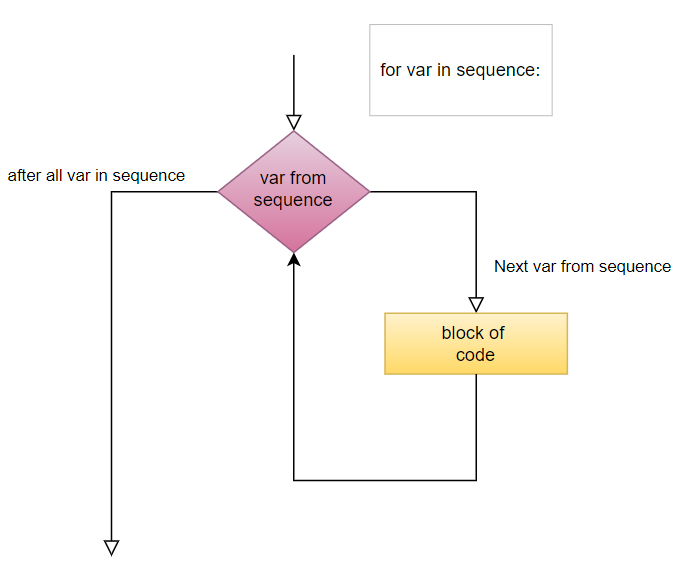Python for Loop
Sometimes a programmer wants to execute a group of statements a certain number of times. This can be done using loops. Based on this, loops are further classified into the following types: for loop, while loop, nested loops.
for Loop
For loops can iterate over a sequence of iterable objects in Python. Iterating over a sequence is nothing but iterating over strings, lists, tuples, sets, and dictionaries.
Example: iterating over a string:
name = 'Abhishek'
for i in name:
print(i, end=", ")Output:
A, b, h, i, s, h, e, k,
Example: iterating over a tuple:
colors = ("Red", "Green", "Blue", "Yellow")
for x in colors:
print(x)Output:
Red
Green
Blue
Yellow
Similarly, we can use loops for lists, sets, and dictionaries.

What if we do not want to iterate over a sequence? What if we want to use a for loop for a specific number of times?
Here, we can use the range() function.
Example:
for k in range(5):
print(k)Output:
0
1
2
3
4
Here, we can see that the loop starts from 0 by default and increments at each iteration.
But we can also loop over a specific range.
Example:
for k in range(4, 9):
print(k)Output:
4
5
6
7
8